Subaru Forester vs. Toyota RAV4: Compare Crossover SUVs
Compact crossover SUVs represent the most popular vehicle segment in the U.S., selling more than pickup trucks and three-row crossover SUVs. The 2024 Toyota RAV4 reigns as the bestselling of the bunch. Even though a redesign is expected for 2025, the RAV4 excels on its range of choices, with gas, hybrid, and plug-in hybrid options. Rugged Adventure and TRD Off-Road editions run up against good values on lesser models, and the hybrid upcharge is only about $1,500 when factoring in all-wheel drive. In short, there’s a RAV4 for everyone.
Subaru puts safety and all-wheel-drive capability at the forefront of the redesigned 2025 Subaru Forester. It may not appear as rugged as the RAV4 or even some of Subaru’s other crossovers, but it’s more off-road capable and now has more refinement in the cabin. It lacks the hybrid options of the RAV4, but it excels at what it sets out to do with a roomy cabin, top safety ratings, and of course, standard all-wheel drive.
These automakers collaborate on other vehicles, including the Toyota bZ4X and Subaru Solterra electric crossovers as well as the Subaru BRZ and Toyota 86 sport coupes, and it seems they benchmark each other in this cutthroat segment. Subaru prices the Forester within $300 of the RAV4, and Toyota raises the suspension on its off-road models to come closer to Subaru’s 8.7 inches of ground clearance.
Even though they have tough competition from the Honda CR-V, to the Hyundai Tucson and the Nissan Rogue, the differences set them apart. Those differences are illuminated here to help you pick what best suits you.
2025 Subaru Forester
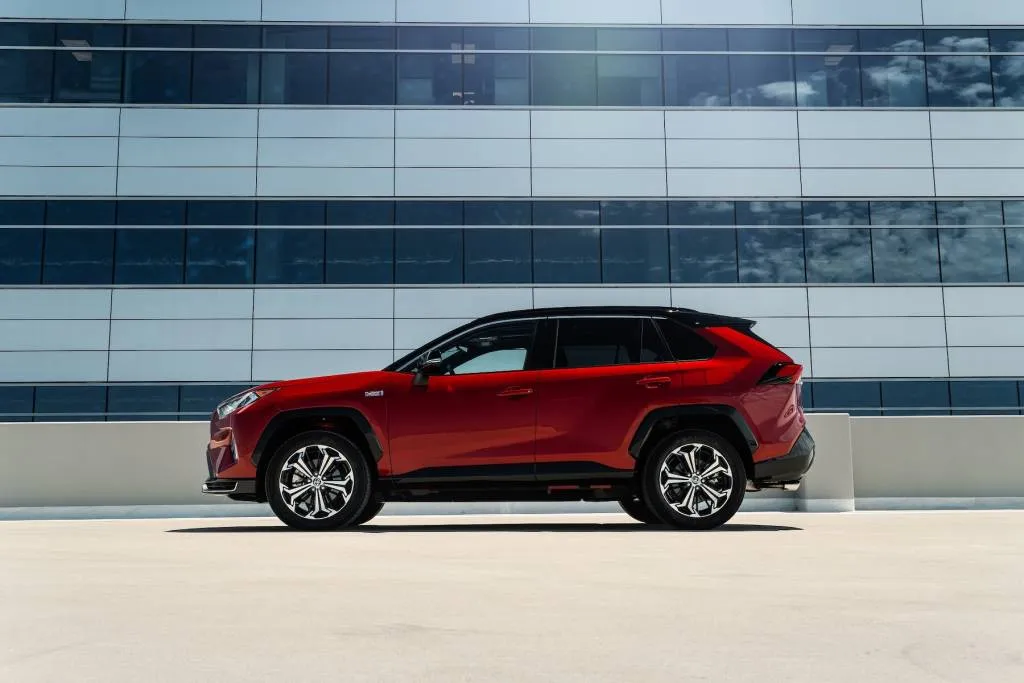
2024 Toyota RAV4
Toyota RAV4 vs. Subaru Forester prices and features
- The base Forester costs $31,090
- A base RAV4 LE with AWD costs $31,425
- Best picks: RAV4 XLE Hybrid, Forester Sport
- Both models have a 3-year/36,000-mile basic warranty
How much is a Toyota RAV4?
Between gas, hybrid, and plug-in models badged Prime, as well as nine trim levels, Toyota offers well over a dozen versions of the RAV4. The base RAV4 LE with front-wheel drive costs $30,025, including a $1,350 destination fee. It comes with 17-inch wheels, an 8.0-inch touchscreen with wireless Android Auto and Apple CarPlay, and cloth upholstery. All-wheel drive adds $1,400 on LE, XLE, Premium, and Limited models, but Hybrid models have all-wheel drive standard. That means the $33,075 RAV4 Hybrid LE costs only $1,650 more than a similarly equipped gas model. The EPA estimates you’d make up the difference in fuel costs in less than four years.
That’s a good value, but for a bit more, the RAV4 Hybrid XLE adds a power driver’s seat, blind-spot monitors, five USB ports, and options such as heated front seats and a 12.3-inch touchscreen. At $34,585, it’s the total package. Toyota offers a lot of other ways to equip the RAV4, including the Prime plug-in hybrid for $45,000 in well-dressed SE trim. It’s a superb iteration of the RAV4’s basic concept and on of if not the best PHEV on the market, but it’s extremely hard to find for anywhere near MSRP.
How much is a Subaru Forester?
Subaru loads the $31,090 base Forester with similar features as the RAV4 the RAV4’s base content outpaces the base Forester, which has dual 7.0-inch touchscreens for infotainment and navigation, along with wired smartphone compatibility.
The $33,390 Premium upgrades to a tablet-style 11.6-inch touchscreen with wireless smartphone compatibility, USB-A and USB-C ports, a wifi hotspot, heated front seats and side mirrors, a 10-way power driver’s seat, roof rails, a sunroof, and an off-road mode with hill descent control. We’re tempted by the extra deep snow/mud mode on the $35,890 Sport model, and the interior has more personality. The lifted suspension on the Wilderness might tempt some adventurers, and the top Touring model features all of Subaru’s nicest materials, but at $41,390 it’s a step too steep.
Advantage: RAV4 Hybrid.
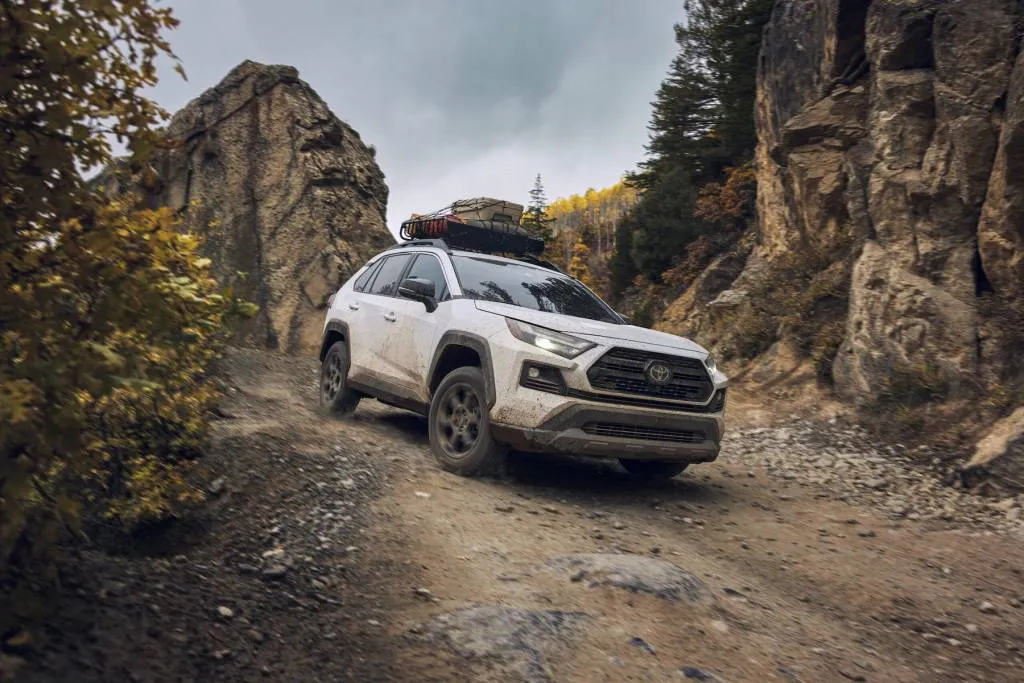
2024 Toyota RAV4
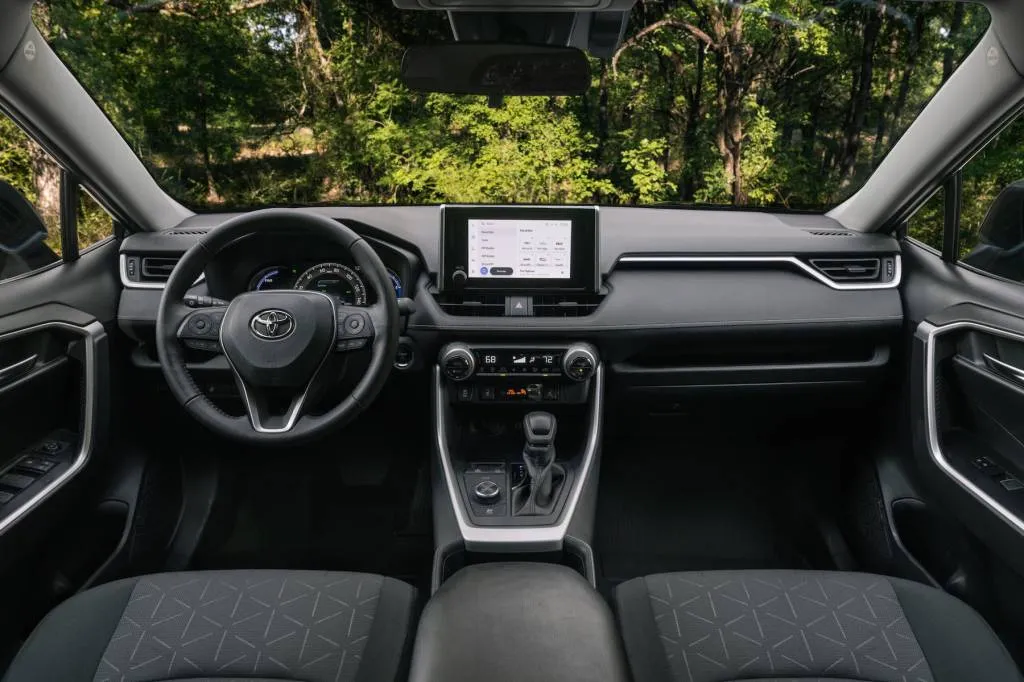
2024 Toyota RAV4
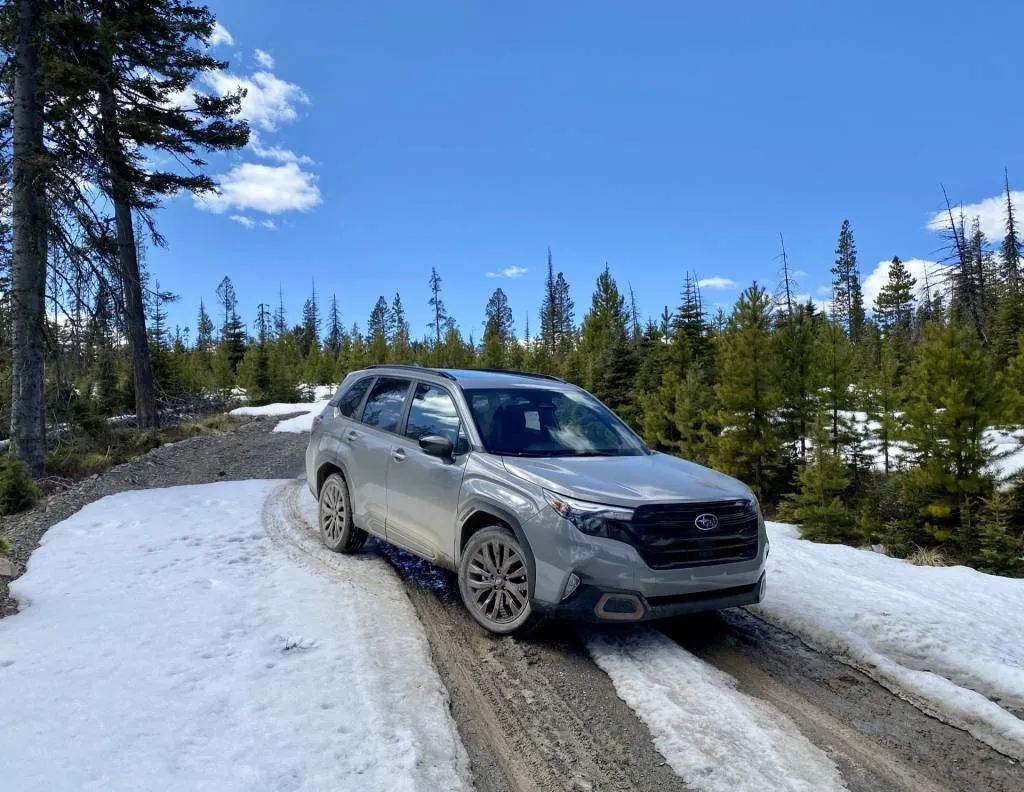
2025 Subaru Forester
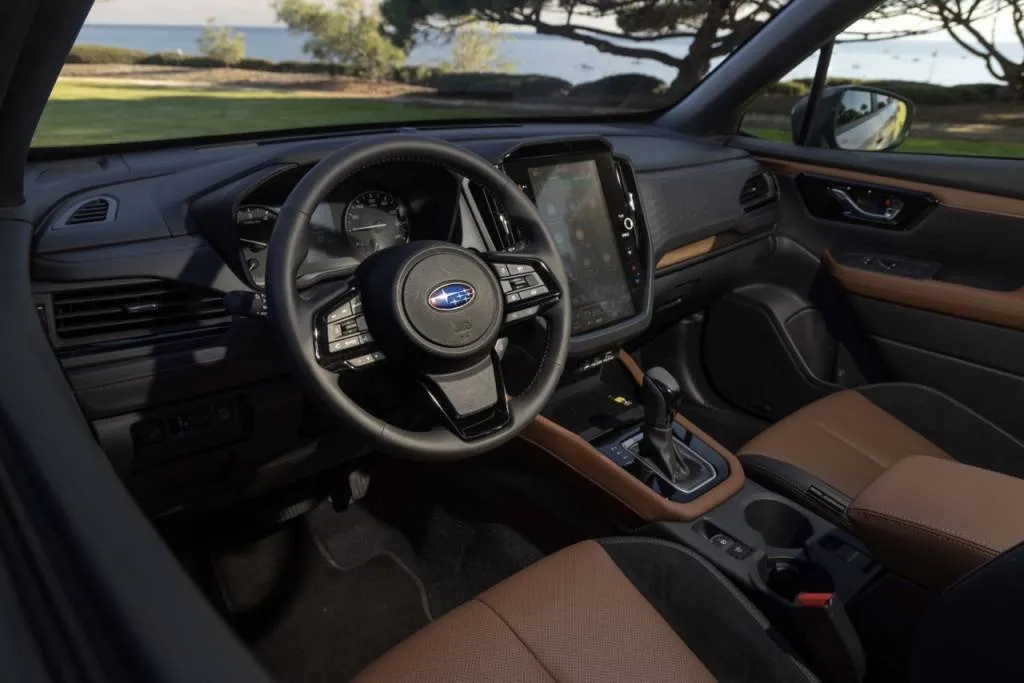
2025 Subaru Forester
Forester vs. RAV4 performance
- RAV4 Prime shoots its shot
- Forester trades capability for power
- Forester rides quieter
How fast is the Subaru Forester? Is the Subaru Forester 4WD?
Subaru puts a full-time all-wheel-drive system on every Forester; it has off-road traction control on all but the base model, too. A half-inch more suspension travel and a half-inch taller body help the Forester Wilderness live up to its name. For when the going gets tough, there’s an aluminum skid plate up front.
Across the board, there’s no emphasis on speed in the Forester. Powered by a 2.5-liter flat-4 making 180 hp, the Forester now has more torque available lower in the rev range. That, coupled with more sound deadening and chassis refinements, results in the quietest cabin ever known to Foresters. It’s never quick, but once moving drivers can make use of available paddle shifters to take hold of eight simulated gear shifts from the continuously variable transmission. Sport and above grades have a Sport mode for a more responsive pedal, and the dual-pinion power steering rack feels quicker and calmer in the hands than in past models.
Ride quality is second only to the Forester’s all-around capability. It helps to have the brand’s dual-function off-road mode that combines hill descent control with traction control to allow for more wheelslip when stuck in deep mud or snow, but even without it, the 8.7 inches of ground clearance and full-time AWD system enable easy traversing of access and backcountry roads. The Forester’s capable, adventurous—and calm, which remains its biggest improvement over its predecessors and a real advantage in this niche.
How fast is the Toyota RAV4? Is the Toyota RAV4 AWD?
Toyota’s deep RAV4 bench starts with the slowest models, all of which are powered by a 203-hp 2.5-liter inline-4. An 8-speed automatic handles shifting, and does the most with the acceptable horsepower—but the engine’s thrashy and loud from the mid-range on toward redline.
The RAV4 Hybrid gets our nod here. It teams a rear-wheel electric motor with a 4-cylinder engine and a battery pack to yield lots of low-end torque, smooth launch power, and attentive shifts through a planetary hybrid transmission. In all, the 219-hp Hybrid checks in a tenth or two slower than the stock RAV4 in 0-60 mph runs, but in perception it’s both quieter and quicker.
Still, for the best RAV4 experience, the Prime suffers no fools. It gets a large 18.1-kwh battery pack that grants it up to 42 miles of all-electric driving—and its net output of 302 hp lights a fire under the crossover from a stoplight start. It can reach 60 mph in 5.7 seconds, Toyota says, with the ineffably slick acceleration of a part-time EV.
All RAV4s handle pretty well—a compliment, given Toyota’s lackluster history in ride and handling. Primes get the most sporting suspension tune, but all versions have enough compliance to soften the road and quick, progressive steering that’s reasonably well weighted.
Advantage: The RAV4, especially the Hybrid and Prime.
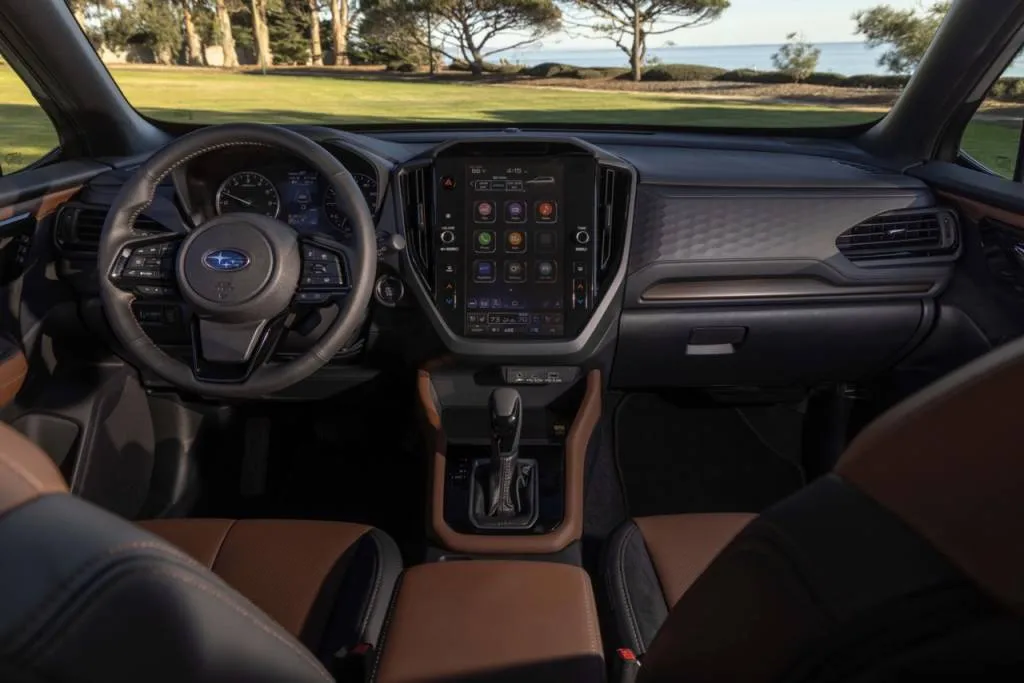
2025 Subaru Forester

2025 Subaru Forester

2023 Toyota RAV4
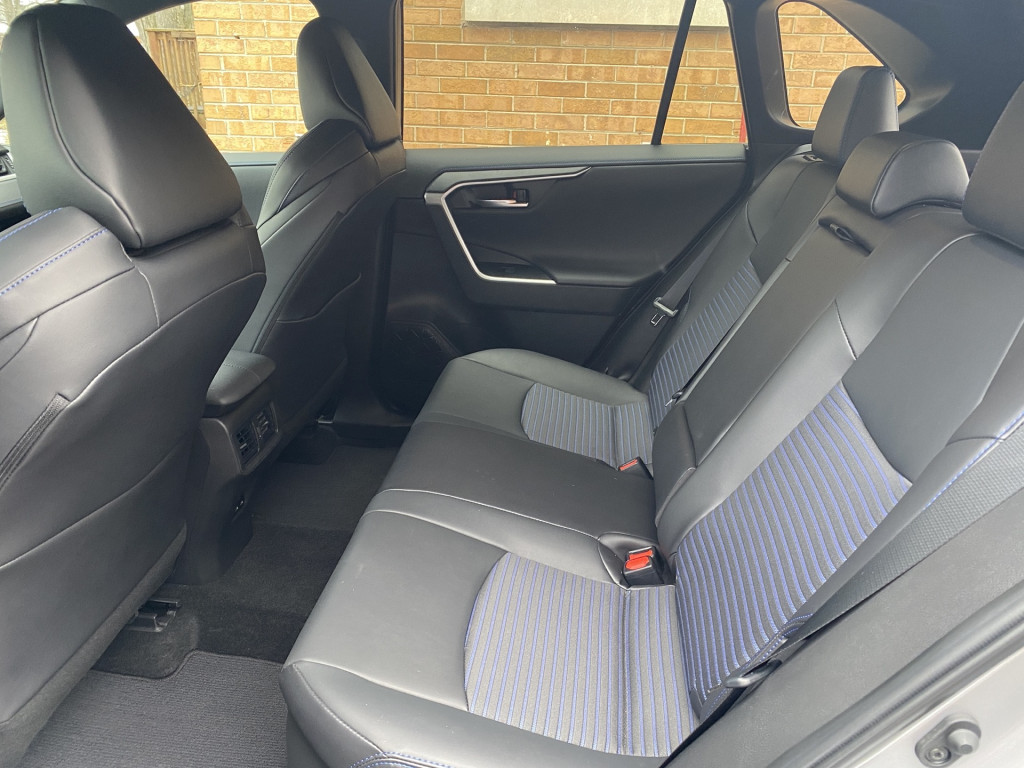
2023 Toyota RAV4 Hybrid XSE AWD
RAV4 vs. Forester specs, seating, and cargo space
- The Subaru Forester is roomier
- The Subaru Forester’s rear legroom extends to 39.4 inches compared to 37.8 inches in the RAV4
- The RAV4’s cargo area holds 37.5 cubic feet versus 29.6 in the Forester
How big is the Subaru Forester?
It has a compact footprint, but the Subaru Forester carves out a comfortable and very useful interior from that foundation. Five people can fit inside, along with their luggage, and with all the accompaniments of daily modern life: pets, smartphones, water bottles, and charging cables.
Subaru stuffs the Forester with well-designed front seats that get power adjustment as the trim price increases. Some versions sport leather upholstery, but that seems counter to the Subaru aesthetic, which is sort of not having an aesthetic. In back, Subaru offers rear-seat passengers about 40 inches of legroom, as much as a CR-V or some mid-size SUVs. The seats themselves have good firm padding, and there’s enough headroom for 6-foot-tall people to relax without slouching.
It’s roomier than the RAV4, but the RAV4 claims more cargo volume with the rear seats up, at 37.5 cubic feet versus 29.6 cubes on the Forester. That seems off in reality, as the Forester’s boxy opening seems larger.
How big is the Toyota RAV4?
The RAV4 can also seat five, but its packaging makes more noticeable compromises. The front seats have even better sculpting, we think, than those in the Subaru—but there’s less padding, which makes the seats feel firmer and less comfortable on long trips. Toyota molds in lots of storage around the cockpit, though, and a nice smartphone shelf awaits the front passenger—for the rare moments when said smartphone leaves their hands.
Row two in the RAV4 offers up less legroom than in the Forester, but more noticeable is the headroom—which comes up shy in front, too. Toyota fits higher-profile seats and that leaves less space for taller passengers in any position than in the Forester.
Advantage: The Forester has more people space.
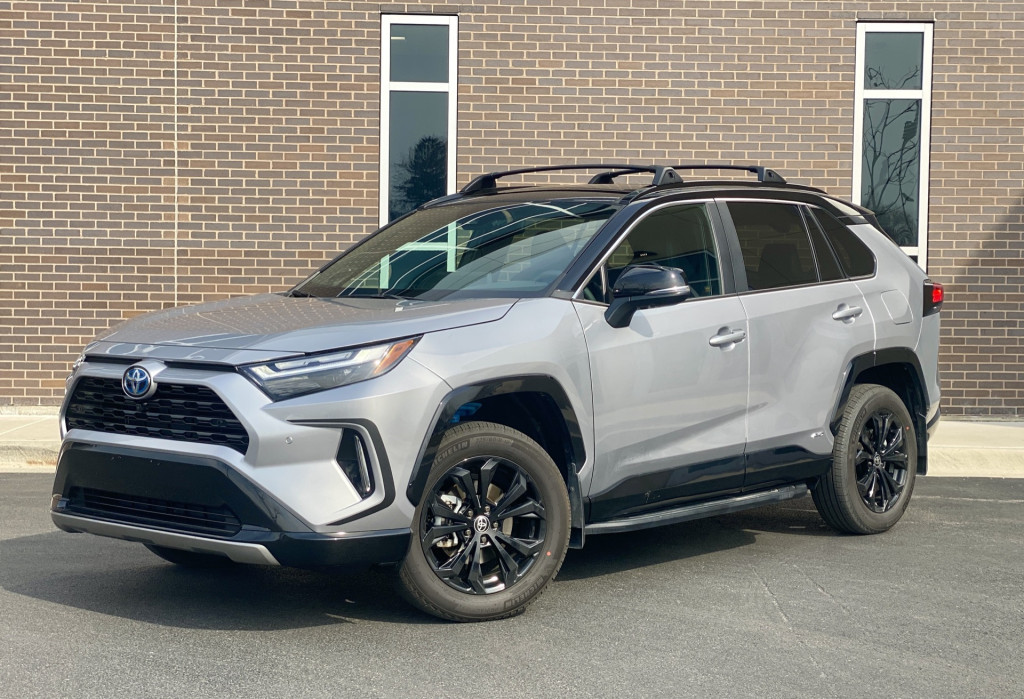
Subaru Forester vs. Toyota RAV4 fuel economy
- The Forester tops out at 29 mpg combined
- Standard RAV4s can deliver 30 mpg combined
- RAV4 Hybrids and Primes are gas-mileage rock stars
Is the Toyota RAV4 good on gas?
It’s hard to top a Toyota hybrid, but Toyota does it themselves with the Prime plug-in hybrid that powers up strong acceleration to go with its 42 miles of all-electric driving. Once the 42 miles of electric range run out, it still operates as an efficient hybrid with an EPA rating of 38 mpg combined. That’s 1 mpg shy of RAV4 Hybrids without a plug. The base RAV4 gets as much as 30 mpg combined, and most all-wheel-drive versions get 29 mpg combined.
Is the Subaru Forester good on gas?
Until the Forester hybrid arrives next year, the Subaru Forester approximates the RAV4 AWD. It gets 26 mpg city, 33 highway, 29 combined, which is average for the class. Larger wheels on Sport and Touring models, as well as all-terrain tires on the Wilderness, lower that figure remains average when it comes to efficiency.
Advantage: Toyota RAV4.
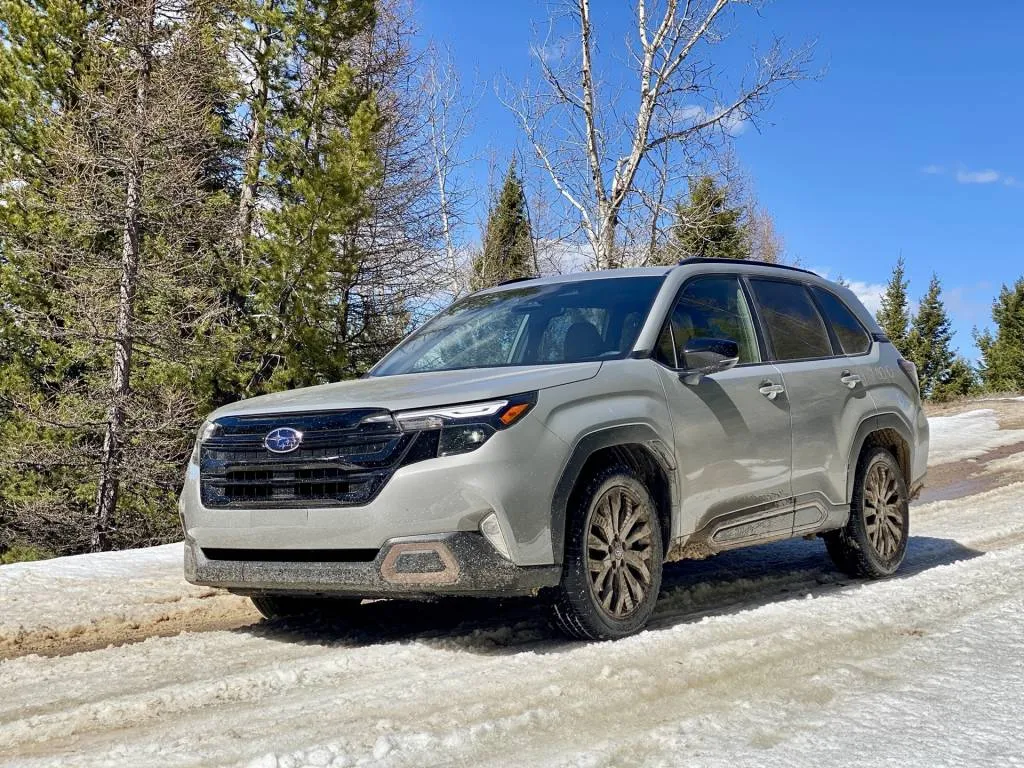
2025 Subaru Forester
Forester vs. RAV4 safety
- Both earn top crash-test scores
- Both come with adaptive cruise control, active lane control, and emergency braking
- The Forester has great outward vision
How safe is the Toyota RAV4?
It’s very safe. The IIHS calls it a Top Safety Pick, and it earned a five-star rating from the NHTSA. It comes with automatic emergency braking, adaptive cruise control, active lane control, and automatic high beams—but blind-spot monitors cost extra on XLE and LE models. The RAV4 has thick rear roof pillars, which clouds the view over the driver’s shoulders.
How safe is the Subaru Forester?
It also earns top marks from the IIHS and the NHTSA, but comes with a more advanced suite of driver-assist features that includes three cameras to capture more activity on the front and sides of the car. Other standard safety features include adaptive LED headlights with automatic high beams and a rear-seat reminder. Blind-spot monitors cost extra here, too—but the Forester’s slim roof pillars and high driver’s seat grant it wide open views out of the front windshield and a view to the rear quarters that’s unparalleled in its class.
Advantage: Both get top crash-tests scores, but the Forester has room with a view.

2025 Subaru Forester
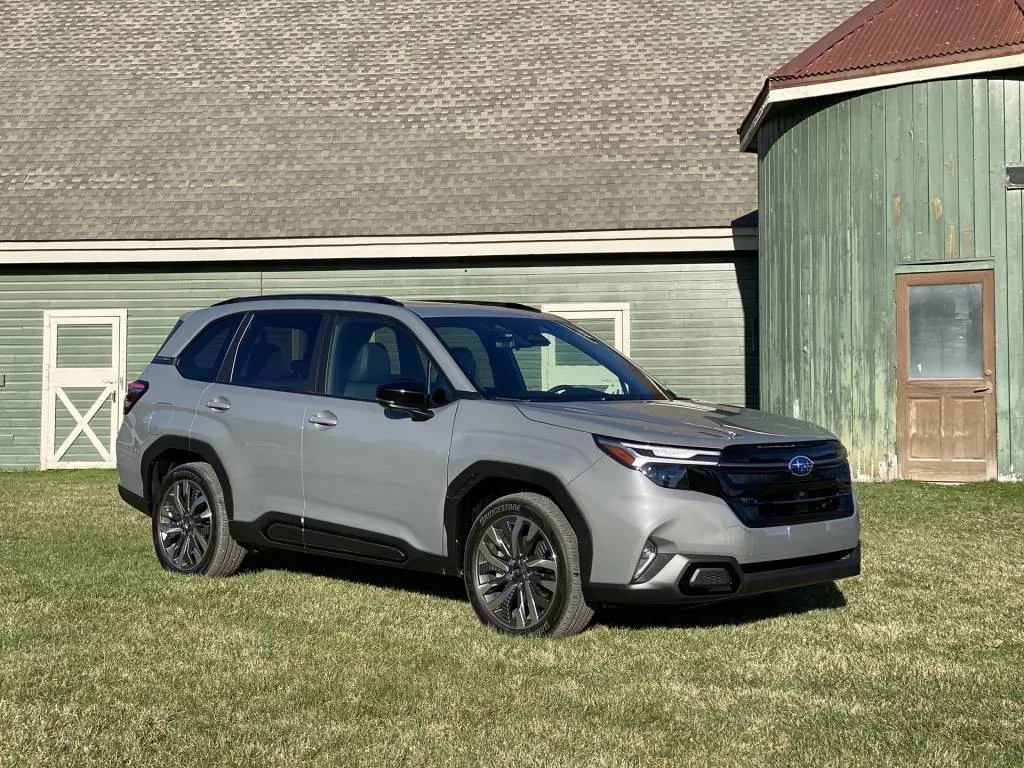
2025 Subaru Forester

2024 Toyota RAV4
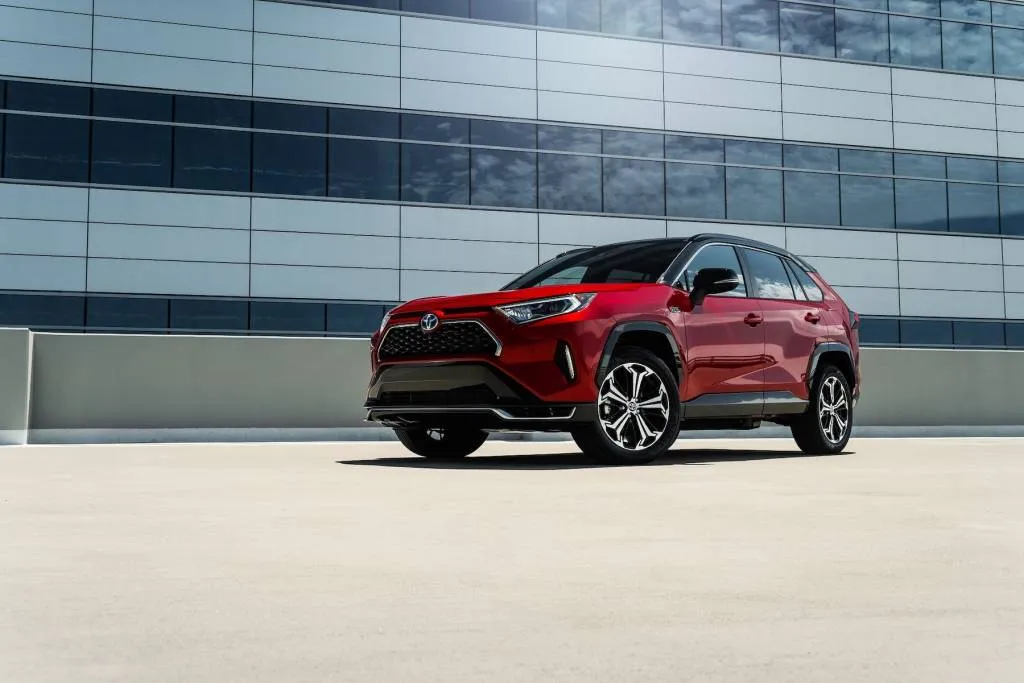
2024 Toyota RAV4
Toyota RAV4 vs. Subaru Forester styling
- We like the angular, adventurous RAV4
- The Forester’s more prosaic, inside and out
- Each has their own brand of casual chic
Is the Toyota RAV-4 a good-looking car?
With its angled roofline and pronounced fender flares, the RAV4 has grown into an adventuresome style that plays well on the road or on the lightly graveled trail. Toyota adapted some of the best cues of its trucks to the compact crossover—and they play well years later, thanks to a balanced, wedgy stance and the good sense to back off of the wacky themes Toyota’s tripped over with recent models. The RAV4’s cabin takes a simple horizontal tack and layers it across inexpensive and high-end grades alike, thanks to additions of an available 12.3-inch touchscreen, synthetic leather, and metallic trim. The tiered dash and tight center stack can appear busy, but the shelf above the glovebox is a great modern touch.
Is the Subaru Forester a good-looking car?
The Forester embodies a more practical take for a more practical crowd, with boxy SUV ends and a wide open greenhouse that results in a tall profile.
Where it makes a difference is in its bulldog front end, which serves practical purposes—granting better vision and maneuverability on the moderately difficult trails it can tackle. LED lights and unpainted plastic bumpers serve the same goal: the pseudo-rugged looks of other SUVs get backed up here with actual ability.
Inside, the vertical 11.6-inch touchscreen on all but the base model orients the dashboard. With volume and tuning knobs in the bezel along with temperature buttons, the dash remains clean, uncluttered, and with a bit more flair courtesy of available two-tone upholstery and textured accents.
Advantage: The RAV4’s flashier, the Forester’s more understated.
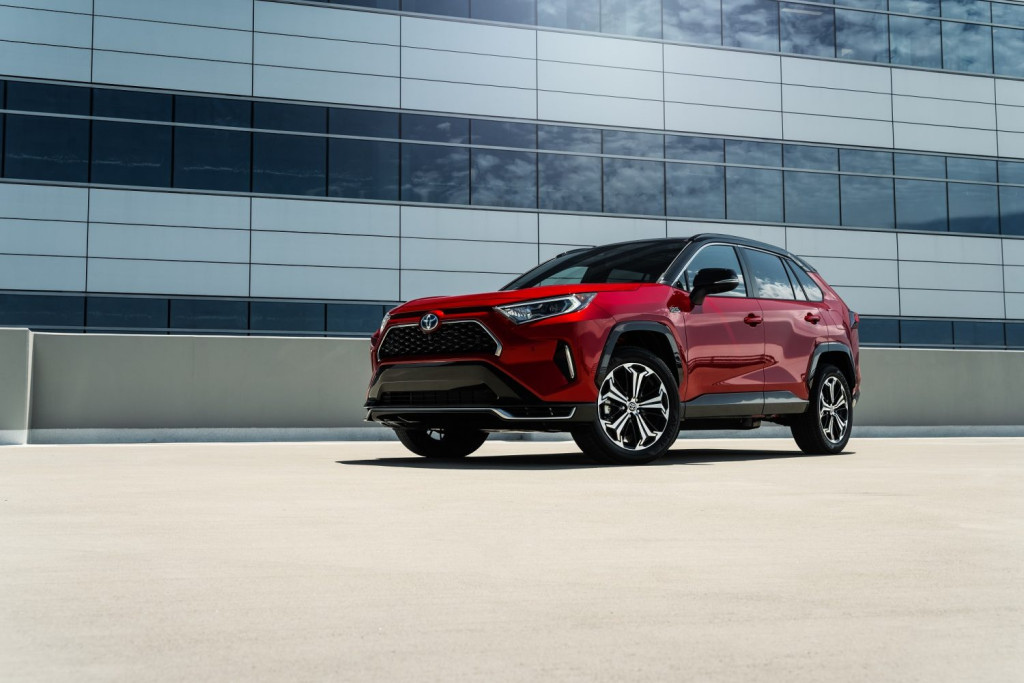
Which is better: Subaru Forester or Toyota RAV4?
Toyota scores a TCC Rating of 6.5 out of 10, but the RAV4 Hybrid or Prime would nudge higher thanks to its great acceleration and fuel economy. (Read more about how we rate cars.) The Forester, meanwhile, earns a 6.2 out of 10, but an expected perfect 10 on its safety rating will boost its overall TCC Rating to a 6.8, once the NHTSA gets done testing it. It’s really a tossup by the numbers, and both represent the difficult choices presented to crossover buyers: when everything’s good, what’s best? Given the choice, we’d spend a bit more for the RAV4 Hybrid, and that’s why it ekes out the win here.
